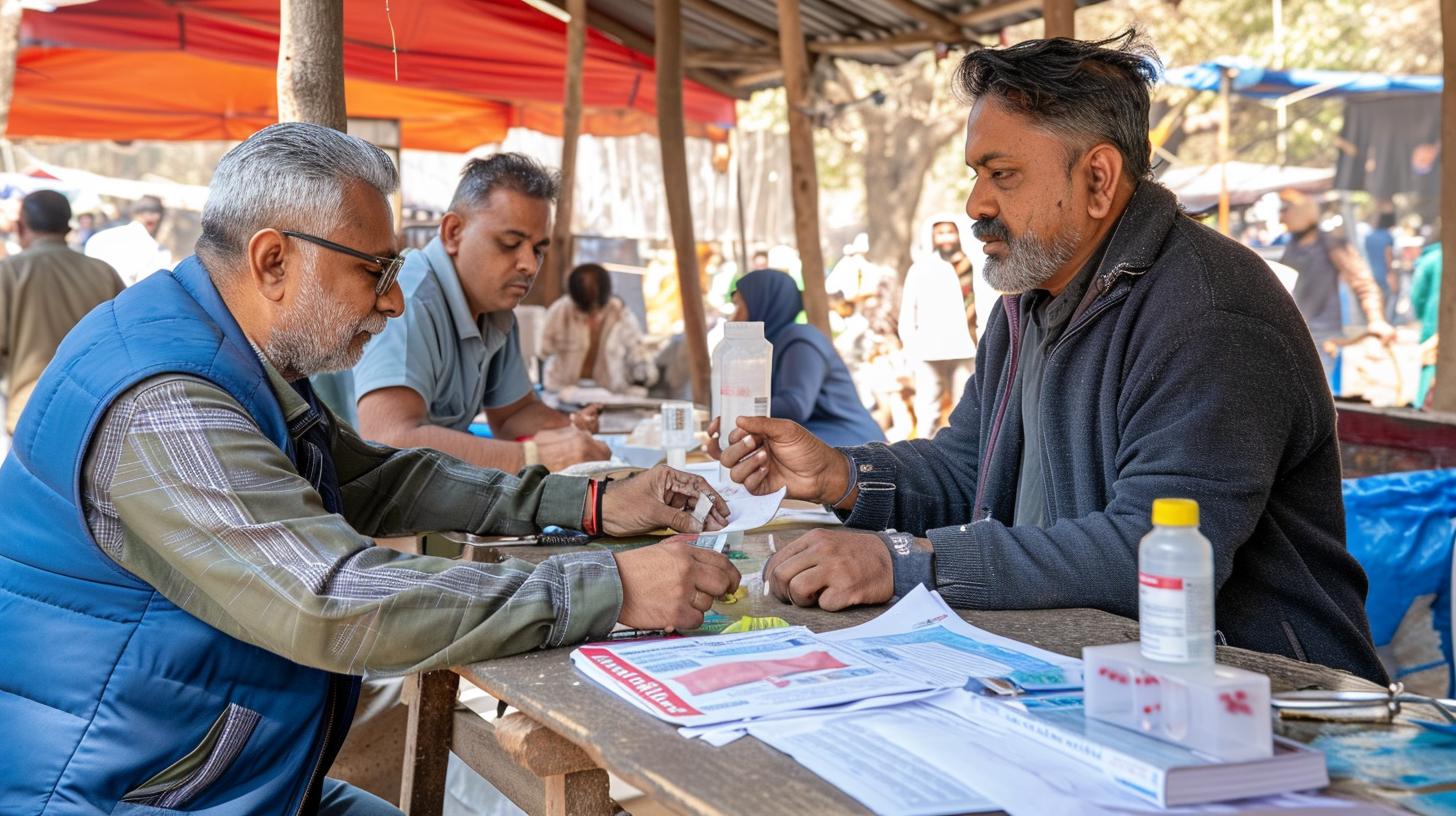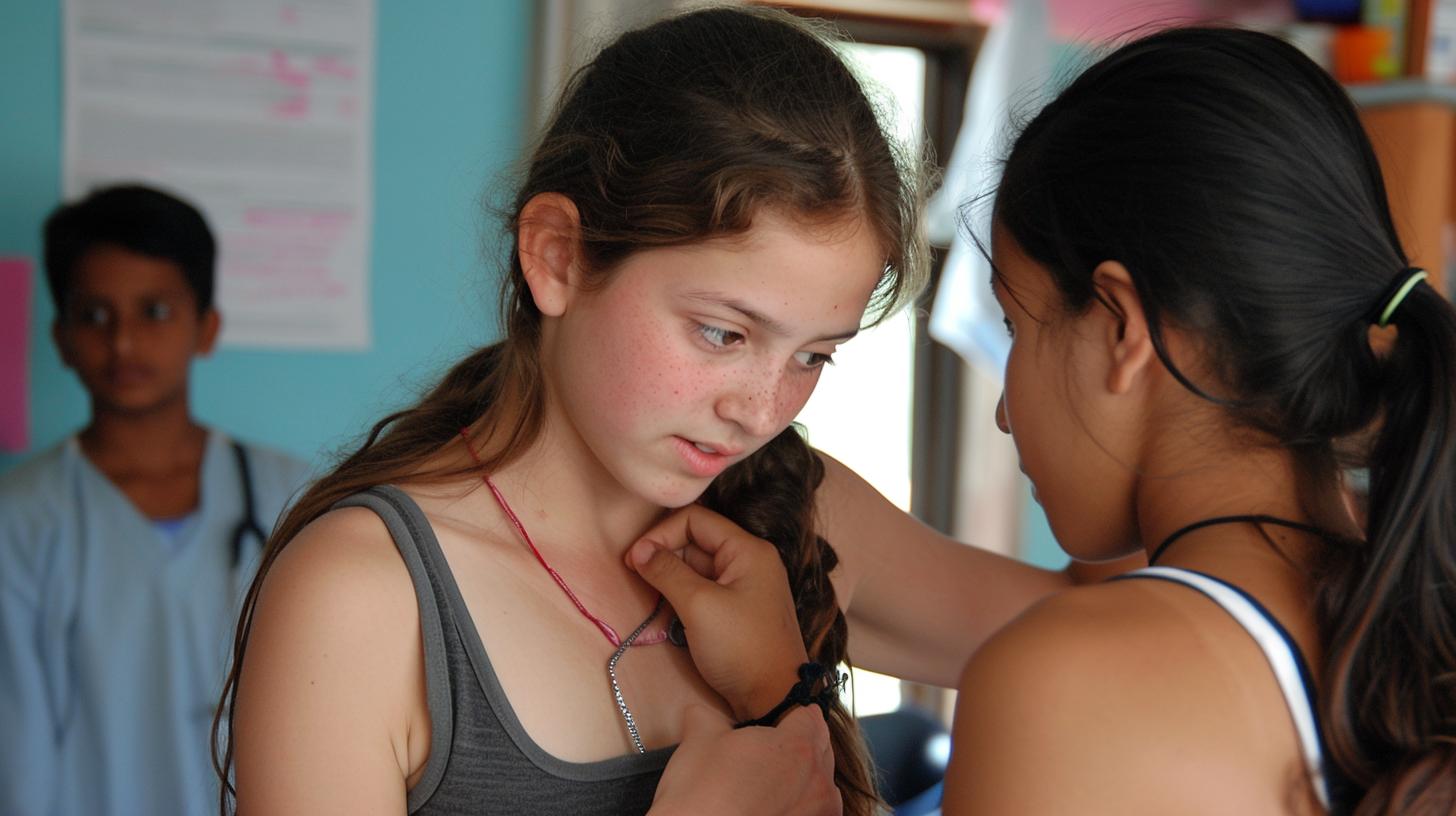
Are you interested in learning about tuberculosis and its impact on public health? Are you considering pursuing a career as a health visitor specializing in tuberculosis prevention and control? If so, then the Tuberculosis Health Visitor Course may be just what you’re looking for. This comprehensive course is designed to provide aspiring health visitors with the knowledge and skills necessary to effectively address the challenges posed by tuberculosis in communities.
Tuberculosis is a serious infectious disease that continues to pose a significant global health threat. In this introductory section of the article, we will explore the basics of tuberculosis, including its causes, symptoms, and transmission. We will also examine the impact of tuberculosis on public health, emphasizing the importance of effective prevention and control strategies.
Health visitors play a crucial role in promoting community health and wellbeing, particularly when it comes to managing infectious diseases such as tuberculosis. As such, it is essential for health visitors to receive specialized training in tuberculosis prevention and control.
In the following sections of this article, we will delve into the specific role of health visitors in addressing tuberculosis, as well as the benefits of pursuing a Tuberculosis Health Visitor Course. Whether you are already working as a health visitor or are considering entering this field, this course can provide valuable insights and skills to help you make a positive impact on public health.
Understanding the Impact of Tuberculosis on Public Health
Tuberculosis, often referred to as TB, is a contagious and potentially fatal bacterial infection that primarily affects the lungs. It is caused by the bacteria Mycobacterium tuberculosis and can easily spread from person to person through the air when an infected individual coughs, sneezes, or speaks.
TB has been a major public health concern for many years, especially in developing countries. The impact of tuberculosis on public health is significant, as it contributes to high mortality rates and poses a major challenge for healthcare systems worldwide.
Global Impact of Tuberculosis
Tuberculosis continues to be one of the top 10 causes of death worldwide, with an estimated 10 million people falling ill with TB in 2019 alone. The burden of TB is particularly heavy in low – and middle-income countries, where factors such as poverty, malnutrition, and overcrowded living conditions contribute to the spread of the disease. Furthermore, TB can have far-reaching social and economic consequences on individuals, families, and communities.
The Need for Public Health Interventions
Given its impact on global health, effective public health interventions are crucial in addressing the burden of tuberculosis. This includes early detection and diagnosis of TB cases, timely access to treatment with appropriate anti-TB medications, and efforts to prevent the transmission of the disease within communities.
Health visitors play a vital role in implementing these interventions at the community level by raising awareness about TB prevention, conducting screening activities, providing support to individuals undergoing treatment, and promoting adherence to medication regimens.
Role of Health Visitors in Tuberculosis Control
Health visitors are uniquely positioned to contribute to tuberculosis control efforts due to their close engagement with individuals and families within their local communities. By delivering education on TB prevention and control measures and identifying individuals at risk of TB exposure or infection early on during home visits or community outreach activities, health visitors can play a key role in reducing the incidence and impact of tuberculosis.
As such, specialized training through a tuberculosis health visitor course equips these professionals with the knowledge and skills necessary to effectively address this public health challenge.
The Role of Health Visitors in Tuberculosis Prevention and Control
Identifying High-Risk Individuals
One of the primary responsibilities of health visitors in tuberculosis prevention and control is to identify individuals who are at high risk of contracting the disease. This involves conducting thorough assessments and screenings to determine potential exposure to tuberculosis. By identifying high-risk individuals, health visitors can implement targeted interventions and provide necessary support to prevent the spread of tuberculosis within the community.
Educating and Supporting Communities
Health visitors also play a key role in educating communities about tuberculosis, its transmission, symptoms, and preventive measures. They provide valuable information on seeking timely medical care and adhering to treatment protocols for those diagnosed with tuberculosis. Additionally, they offer essential support to affected individuals and their families by addressing concerns, providing resources, and promoting a supportive environment for those dealing with the disease.
Collaboration With Healthcare Professionals
In addition to working directly with individuals and communities, health visitors collaborate closely with healthcare professionals involved in tuberculosis prevention and control. This collaboration ensures coordinated efforts in identifying cases, implementing preventive measures, and monitoring treatment outcomes. By serving as a bridge between healthcare providers and communities, health visitors facilitate comprehensive care for those affected by tuberculosis.
By undergoing a Tuberculosis Health Visitor Course, aspiring health visitors can gain specialized knowledge, skills, and competencies tailored specifically for addressing tuberculosis within communities. This comprehensive training equips them with the tools needed to effectively fulfill their roles in preventing and controlling tuberculosis while promoting overall public health.
Overview of Tuberculosis Health Visitor Course
The Tuberculosis Health Visitor Course is designed to provide comprehensive training to health professionals who are working in community and public health settings. The course covers a wide range of topics related to tuberculosis, including its epidemiology, pathophysiology, diagnosis, treatment, and prevention. It also equips participants with the necessary skills to effectively engage with communities and individuals affected by tuberculosis.
One of the key objectives of the Tuberculosis Health Visitor Course is to enhance the capacity of health visitors in identifying and responding to tuberculosis cases within their respective communities. This includes educating at-risk populations about tuberculosis prevention measures, conducting outreach programs, and providing support to patients undergoing treatment for tuberculosis. By completing this course, health visitors will be better equipped to play a pivotal role in tuberculosis control and prevention efforts.
The curriculum for the Tuberculosis Health Visitor Course typically includes modules on public health principles, infection control practices, communication strategies for behavior change, and counseling techniques for TB patients. Participants are also required to undergo clinical rotations where they can gain practical experience in managing tuberculosis cases under the supervision of qualified healthcare professionals. Additionally, there may be specific requirements such as obtaining certification in CPR or basic life support during emergencies.
| Topic | Data |
|---|---|
| Topics Covered | Epidemiology, pathophysiology, diagnosis, treatment, prevention |
| Specific Requirements | Certification in CPR or basic life support during emergencies |
Curriculum and Requirements for Tuberculosis Health Visitor Course
The curriculum for a tuberculosis health visitor course is designed to provide students with the knowledge and skills necessary to effectively prevent and control tuberculosis in communities. The coursework covers a wide range of topics related to the disease, including its causes, symptoms, diagnosis, treatment, and prevention strategies. Additionally, students will learn about the social and economic factors that contribute to the spread of tuberculosis, as well as the impact of the disease on public health.

Some key components of the curriculum for a tuberculosis health visitor course may include:
- Overview of tuberculosis: Understanding the basics of tuberculosis, including its causes and risk factors.
- Epidemiology and public health impact: Studying the prevalence of tuberculosis worldwide and its impact on public health.
- Tuberculosis control strategies: Learning about various strategies for preventing and controlling tuberculosis, such as screening programs and infection control measures.
In order to successfully complete a tuberculosis health visitor course, students must meet certain requirements. These may include attending a designated number of classroom hours, completing practical training or internships in healthcare settings, and passing exams or assessments to demonstrate their understanding of the material. Some courses may also have specific prerequisites, such as prior experience in nursing or healthcare.
Ultimately, the curriculum and requirements for a tuberculosis health visitor course are designed to equip students with the knowledge and skills needed to become effective advocates for tuberculosis prevention and control in their communities. By completing this specialized training program, individuals can make a meaningful contribution to public health efforts aimed at reducing the burden of tuberculosis worldwide.
Advantages of Pursuing a Tuberculosis Health Visitor Course
Pursuing a Tuberculosis Health Visitor Course offers numerous advantages for individuals interested in making a positive impact on public health. This specialized training provides the necessary knowledge and skills to effectively prevent, control, and manage tuberculosis within communities. By enrolling in this course, participants can gain valuable insights into the best practices for supporting patients with tuberculosis and promoting overall community wellness.
One of the main advantages of pursuing a Tuberculosis Health Visitor Course is the opportunity to acquire in-depth knowledge about tuberculosis, including its causes, symptoms, diagnosis, treatment, and prevention methods. Participants will also learn about the social determinants of health that contribute to the spread of tuberculosis and how to address these issues effectively within diverse populations.
Furthermore, completing a Tuberculosis Health Visitor Course can lead to expanded career opportunities in the field of public health. Certified tuberculosis health visitors are highly sought after by healthcare facilities, government agencies, non-profit organizations, and community health programs. These professionals play a crucial role in educating individuals about tuberculosis prevention strategies and providing essential support to those affected by the disease.

Overall, pursuing a Tuberculosis Health Visitor Course equips individuals with the expertise needed to make meaningful contributions to community health initiatives aimed at controlling and preventing tuberculosis.
| Advantages | Description |
|---|---|
| In-depth Knowledge | Acquire detailed understanding of tuberculosis and its impact on public health. |
| Career Opportunities | Expanded job prospects in healthcare facilities, government agencies, and non-profit organizations. |
| Contribution to Community Health | Ability to make meaningful contributions to tuberculosis prevention initiatives within diverse populations. |
Career Opportunities for Certified Tuberculosis Health Visitors
Health visitors who have completed a tuberculosis health visitor course are equipped with the necessary knowledge and skills to make a meaningful impact in their communities. Upon completion of the course, certified tuberculosis health visitors have the opportunity to work in various settings where they can contribute to tuberculosis prevention and control efforts.
One of the career opportunities available for certified tuberculosis health visitors is working in public health departments or community-based organizations. In these settings, they may conduct outreach programs, provide education and counseling, and assist in identifying and monitoring individuals at risk for tuberculosis. Certified tuberculosis health visitors can also play a vital role in advocating for policies and resources that support tuberculosis prevention and control initiatives within their communities.
Another potential career path for certified tuberculosis health visitors is working in healthcare facilities such as hospitals or clinics. In these settings, they may collaborate with healthcare providers to ensure comprehensive care for patients with tuberculosis, conduct screenings and follow-ups, as well as provide education to staff members on best practices for infection control. Also, they may be involved in developing and implementing protocols to manage tuberculosis cases effectively within healthcare settings.
Moreover, certified tuberculosis health visitors may have the opportunity to engage in research or take on leadership roles within public health or healthcare organizations. With their specialized training and expertise, they can contribute to the development of innovative strategies for tuberculosis prevention and control and play a key part in shaping policies that address the challenges associated with this infectious disease.
By pursuing a tuberculosis health visitor course, individuals can gain the knowledge and skills necessary to pursue fulfilling careers that allow them to make a significant difference in promoting community wellness. The demand for skilled professionals trained specifically in tuberculosis prevention and control presents numerous opportunities for those who complete this specialized training program.
How to Enroll in a Tuberculosis Health Visitor Course
Are you interested in making a difference in public health by becoming a certified tuberculosis health visitor? Enrolling in a tuberculosis health visitor course is the first step towards gaining the necessary skills and knowledge to effectively prevent and control tuberculosis within communities. Here’s how you can enroll in a tuberculosis health visitor course:
1. Research: Start by researching institutions or organizations that offer tuberculosis health visitor courses. Look for accredited programs that provide comprehensive curriculum and hands-on experience in tuberculosis prevention and control.
2. Eligibility: Check the eligibility criteria for enrolling in the course, such as educational background, work experience, or specific prerequisites. Make sure you meet the requirements before applying for the program.
3. Application Process: Once you have identified a suitable tuberculosis health visitor course, follow the application process outlined by the institution or organization offering the program. This may include submitting an application form, academic transcripts, letters of recommendation, and a personal statement outlining your interest in pursuing a career as a tuberculosis health visitor.
4. Financial Aid: Inquire about any financial aid or scholarships available for the tuberculosis health visitor course. Some institutions may offer assistance to eligible candidates to help cover tuition fees and other expenses related to the program.
By enrolling in a tuberculosis health visitor course, you will be equipped with the knowledge and skills needed to make a positive impact on public health by contributing to tuberculosis prevention and control efforts within communities.
Conclusion
In conclusion, it is clear that the training of health visitors in tuberculosis control and prevention is crucial in addressing the impact of this disease on public health. The Tuberculosis Health Visitor Course equips individuals with the knowledge and skills necessary to effectively identify, prevent, and manage tuberculosis cases within their communities.
By understanding the importance of early detection and treatment adherence, certified tuberculosis health visitors play a vital role in reducing the spread of the disease and improving public health outcomes. The curriculum for the course covers key topics such as infection control measures, TB medication management, patient education, and collaboration with healthcare teams.
Furthermore, pursuing a Tuberculosis Health Visitor Course provides numerous career opportunities for individuals looking to make a difference in their communities. Graduates may find employment in various healthcare settings such as clinics, public health agencies, community organizations, or non-profit organizations dedicated to tuberculosis control.
Overall, investing in training health visitors in tuberculosis prevention and control not only benefits individual patients but also contributes to global efforts to eradicate this infectious disease. As such, it is essential that more individuals consider enrolling in a Tuberculosis Health Visitor Course to contribute towards creating healthier communities.






